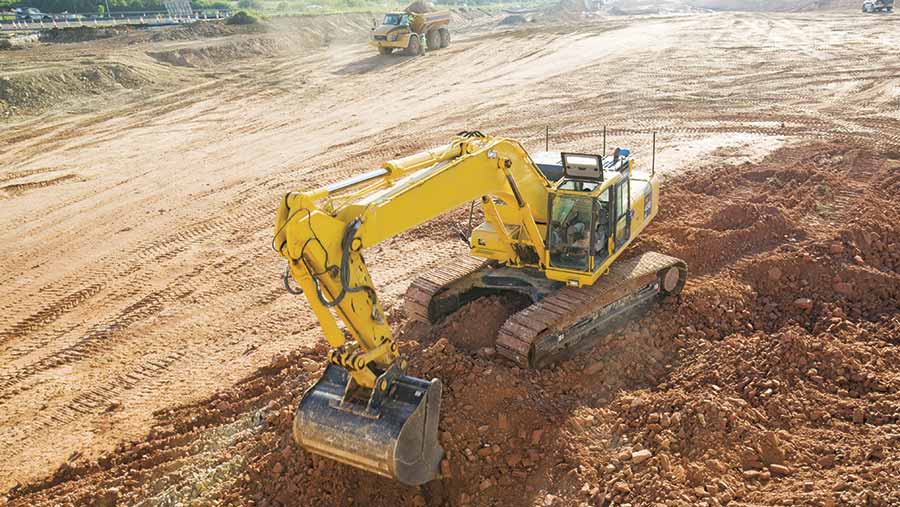Rollover relief – what is it and how does it work?
 © Global Warming Images/REX/Shutterstock
© Global Warming Images/REX/Shutterstock Buyers with rollover funds are the driving force behind many farmland purchases. With growing numbers of development deals in the pipeline, more landowners are likely to find themselves in this position.
Will Parry, from Strutt & Parker’s Estates and farm agency department, explains how rollover relief works and what it means for the farmland market.
What is rollover money?
The correct term for rollover is Business Asset Rollover Relief. It is commonly seen in agriculture and the rural property market, where a landowner disposes of part or all of their farm or land, often for residential or commercial development, or due to a compulsory purchase.
See also: Duchy of Cornwall: Creating opportunities for new entrants
The numbers
- 3 years – time allowed from sale before proceeds must be reinvested to get rollover relief
- 20-28% – rate of CGT paid by higher rate taxpayers
- 10-18% – rate of CGT for basic/standard rate taxpayers
- 10% – effective rate of CGT where Entrepreneurs’ relief is available
The relief allows the seller to defer any Capital Gains Tax (CGT) due when they dispose of the land, so long as they reinvest the proceeds into qualifying assets, which includes land, buildings and fixed plant or machinery.
If the money is rolled over in this way, CGT becomes payable only when/if the new asset is sold.
Eligibility rules
To qualify for Business Asset Rollover Relief, a landowner must generally acquire the replacement property within three years of disposing of the original land (or up to one year before).
HMRC can grant an extension in exceptional circumstances, but the applicant would need to be able to prove they had been bidding on land but were unsuccessful.
The seller of the land must still be trading at the point of disposal, and critically can reinvest only in land that will be occupied and run by them. Simply, if you are farming the land on disposal, you must farm the replacement land upon the completion of the reinvestment.
There are different rules if a landowner only reinvests part of the proceeds of selling off old assets or the old assets were only party used in the business. In these cases, partial relief is available.
Where are rollover buyers most active?
This tends to be in areas of the country where there is most development, which currently is the South East and central England. However, although most of the proceeds are generated in these areas, buyers often choose to relocate to other parts of the UK.
By generating a lump sum from a sale, a business has the option to upscale considerably if desired.
What are rollover buyers looking for?
These buyers really fall in to two camps: the whole farm buyer, those individuals who may have lost all, or the most part, of their main holding to development and now need to re-establish a farming base; or the land buyer wishing to expand their existing enterprise from the sale of a smaller, or non-core part of their current farm.
The requirement to rollover the money into a qualifying asset means the money must be used to buy land or other qualifying trading assets, so a farm with a large country house as part of the package can prove problematic.
As already stated, it is also not possible to go from being an owner-occupier to a landlord, while claiming the relief, so any land purchased must come with vacant possession and either be farmed in-hand, or through an arrangement like a Contract Farming Agreement.
Given land may not come up for sale locally very often, it may be necessary to work with an agent to look for opportunities to buy off-market in a private sale where the land is not advertised openly. This can create opportunities for sellers in some areas.
How best to prepare for the receipt of rollover money?
Three years in which to reinvest the proceeds of a sale sounds like a long time. In reality, it is only six selling seasons, given most farmland comes to the market in spring and autumn. Many people get to the 18-month mark and then start to panic that they can’t find the right thing, so being organised can really pay off.
Even before the development deal has been concluded it is worth tracking what is happening in the farming press and talking to agents in the market, asking to be alerted to land that might be coming up for sale in future.
One misconception is that rollover funds will come in one lump sum. It is much more usual these days for a developer to take out an option to develop an area of the farm, but start by developing smaller phases.
This means that funds typically come through in tranches, which can have implications both for funding a new purchase and for ensuring it is within the qualifying period for relief.
Is it always right to claim the relief?
Claiming the relief might seem like the obvious option, but it is important to assess where the business is going first. It is a watershed moment for many – should they continue farming or head in a different direction?
Often farming families will sit down and decide that they would prefer to pay the tax or invest in a different sort of business altogether.
The right decision is what is right for your own circumstances, but is always advisable to take professional advice to understand the full tax implications of all the options.
